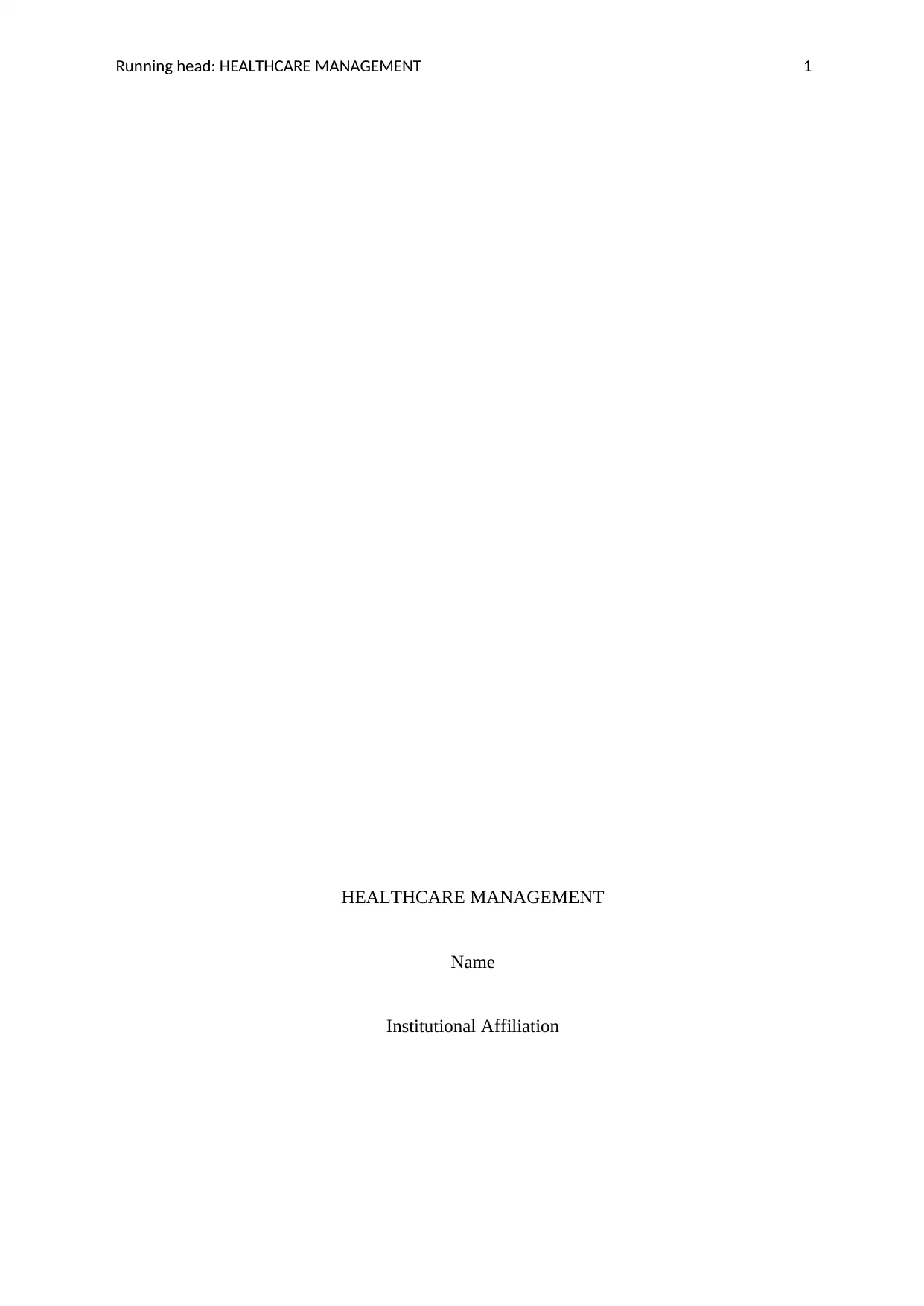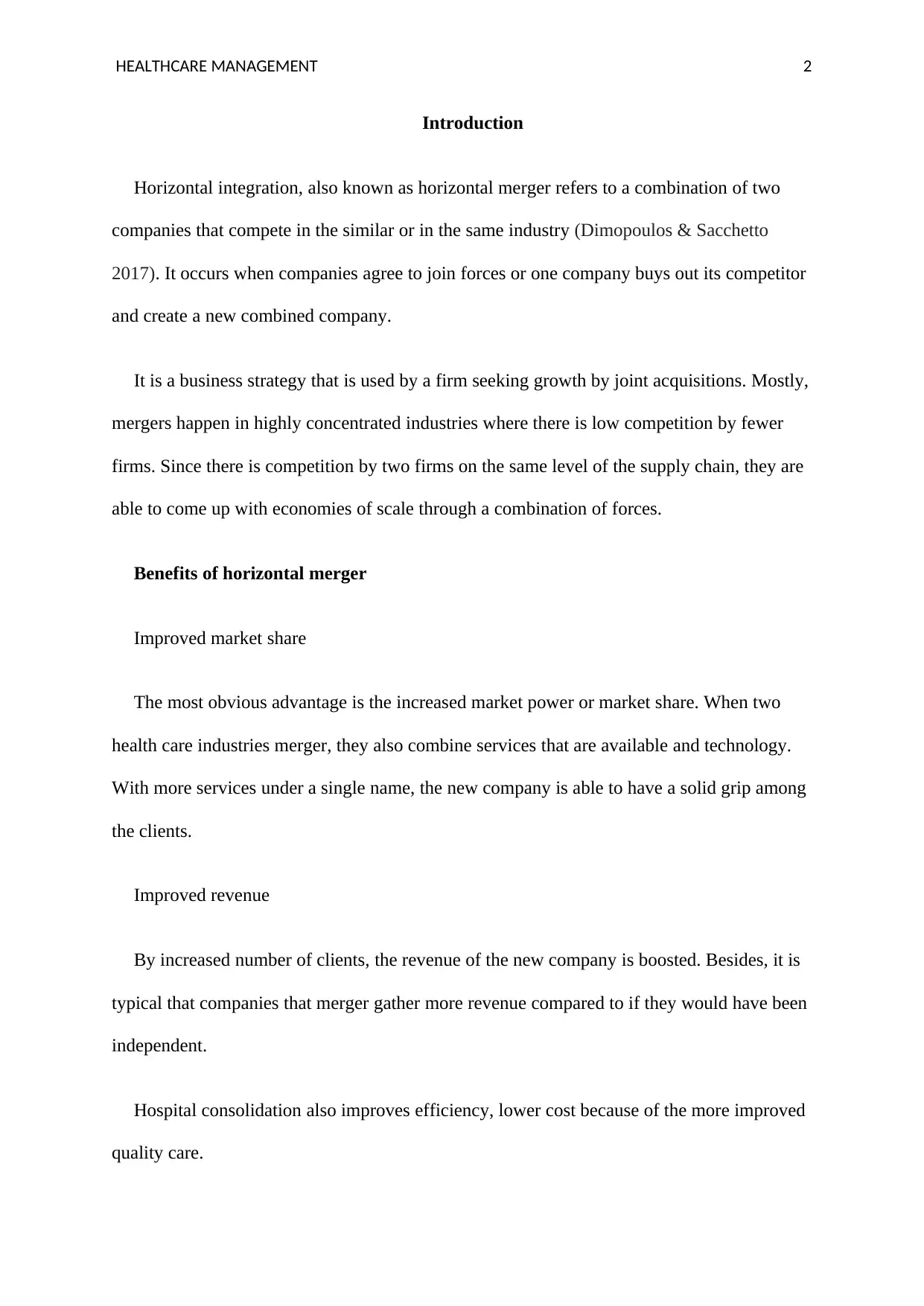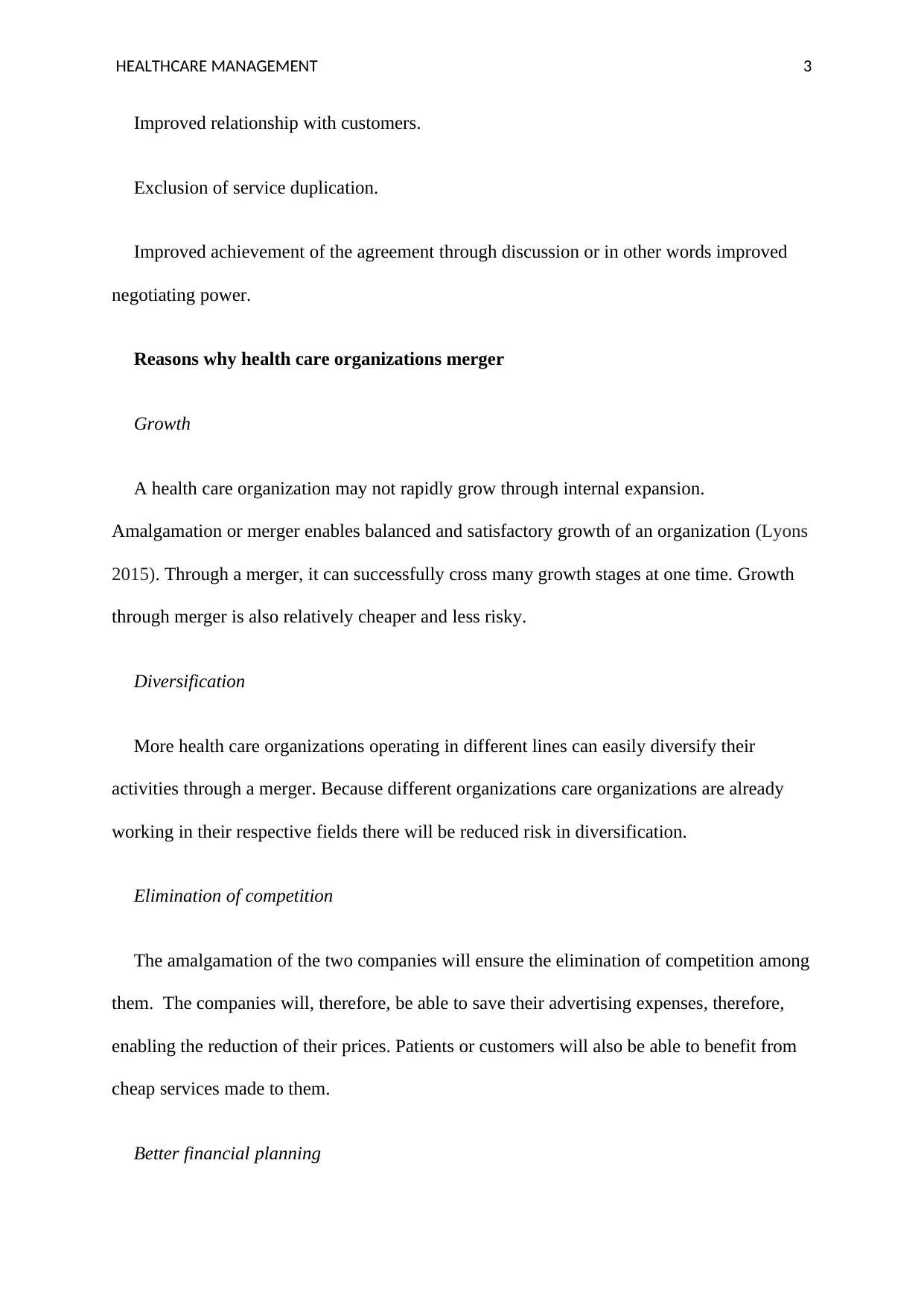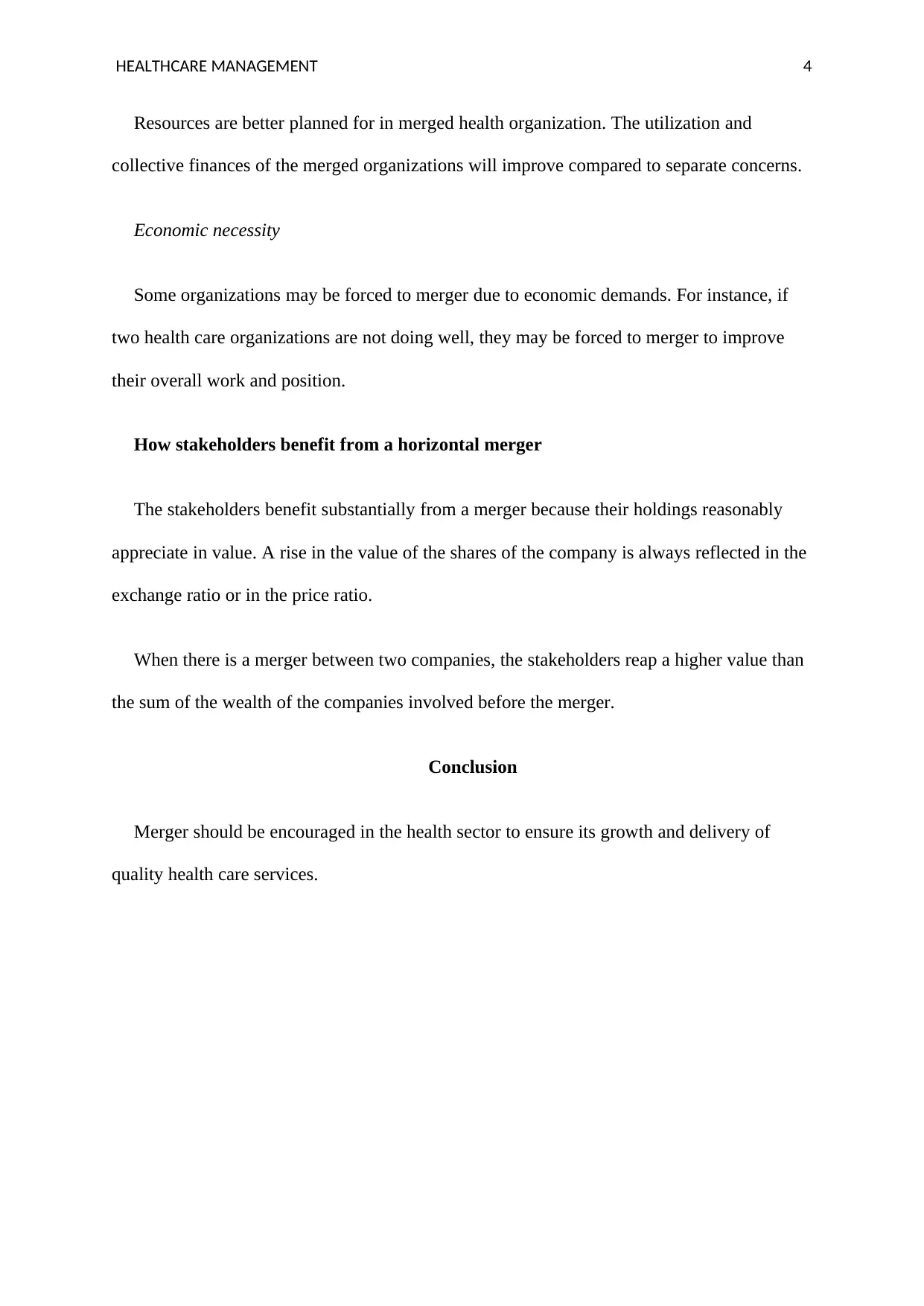Healthcare Management: Horizontal Merger Analysis Report 2024
VerifiedAdded on 2023/02/01
|5
|659
|64
Report
AI Summary
This report provides an analysis of horizontal mergers within the healthcare industry. It begins by defining horizontal integration and mergers, emphasizing their role in consolidating market share and increasing efficiency, particularly through the combination of services and technologies. The report explores the advantages of such mergers, including improved market share, revenue growth, and enhanced customer relationships. It also examines the reasons behind healthcare organizations merging, such as the ability to grow rapidly, diversify operations, and eliminate competition. Furthermore, the report details how stakeholders benefit from mergers through increased value and better financial planning. Finally, the report concludes that mergers should be encouraged to foster the growth and improve the quality of healthcare services. The report also references relevant academic sources to support its findings.
1 out of 5












![[object Object]](/_next/static/media/star-bottom.7253800d.svg)